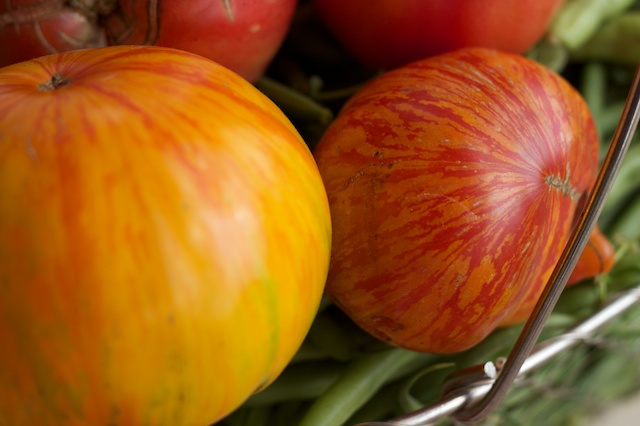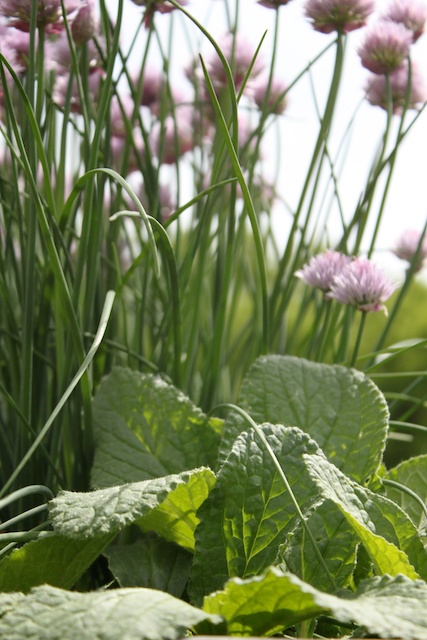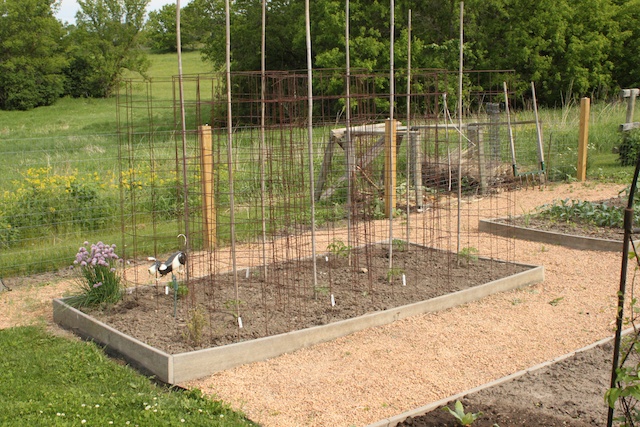Take it from one who knows.
Due to a serious lack of character, I never got around to planting my squash, melons and pumpkins in their dedicated patch. You may remember part of the reason why from the pictures I posted when writing about Strawberries back on June 4th. For your convenience, here is what the patch looked like on planting day:

So, it goes without saying that it got stuck on the back burner for a while. As soon as Charlie was out of school and bored (his sister was not yet out), we went to town weeding:

It looked marvy.

Well, maybe not marvy, but then we got all that old fabric off of there (the best we could, read below) and took apart my old cold frame and then it looked marvy:
But then the rains started.
It rained all June. Buckets and buckets.
That square patch turned into a slimy, gooey, clay-ish, nightmare. While I waited for it to dry out a bit, I started the seeds in pots to get a “head start”.
I was also battling with Dave, who insisted I put down more landscape fabric to keep down the weeds. He had bought some, which — I admit — was really nice and thoughtful of him. (Have I told you that he has started being nice and thoughtful lately and it is really starting to worry me?)
But here’s the thing:
I am not convinced at all that landscape fabric keeps the weeds down in my pumpkin patch. I’ve had that patch for about 10 years now and I always have weeds. Here are my observations of fabric/plastic mulch:
- It flaps around in the wind and rips. Because nothing is placed on top of the fabric and it takes a long time for the plants to grow big, wind (we have a lot of wind) catches the seams and rips it. Weeds take over where there are rips. So I have tried burying the seams with soil. Weeds grow there, too.
- It disintegrates over time. I have tried both cheap and expensive fabrics and plastics. Given that they are exposed to the sunlight, they all fall apart after a while. The plastic rips to shreds and the fabric becomes a disconcerting mass of fibers that can’t be extracted from the soil underneath it. It’s like it’s part of the soil. It freaks me out.
- I wonder about the contents of the fabrics and plastics and what they might be transferring to the soil, plants and ultimately, our food. Now, I know that sounds a little insane and over the top, but there are days that black surface gets hot enough to fry an egg on. We’ve all heard about BPA’s and the bad stuff in our food plastics. I can only imagine what is in the stuff that isn’t food grade? And how much of it is melting into the “organic” soil of my garden?
I tell all this to Dave, who just shakes his head in dismay. (I truly drive him crazy.) I will roll over to Dave if he pushes it, but we run out of time on that particular day and the topic is shelved for the following weekend. –Which passes in a blur of a pool day on Saturday with a friend and Charlie’s birthday the next.
So, as luck would have it, I finally planted the anemic and sad, waterlogged plants last Monday while I was alone and abandoned; Dave had taken the kids and some friends to the brand new outdoor Twins Stadium — with Champions Club tickets, no less (fodder for another post). For those of you keeping track, that was June 28th. In an area with only about 150 growing days in the best of times. And when you plant pumpkins and melons later than other plants, because they only tolerate warm soil (subtract 30 days), that usually puts me at a planting date of June 1 for those plants.
Nope. I’m almost 30 days past that. And pumpkins and squash take at least 100 days to reach maturity. I’m cutting it close. Oh well.
It looks pretty weird to have this gigantor area of dirt that isn’t all black and crumbly and beautiful. I guess that just shows what my dirt looks like after being covered up with landscape fabric for years, Dave!
Actually, it’s because we have clay soil and this area hasn’t been amended like the regular garden has. I don’t have enough compost to put over the entire patch, plus, it really was mostly covered by fabric for years. I usually only amend the individual planting holes. Which is what I did this year:
And, hopefully after being in some real dirt, instead of a rain-soggy pot, these sad yellow plants will perk up and take off.
It’s Never too late, I tell you. You’ll see.










